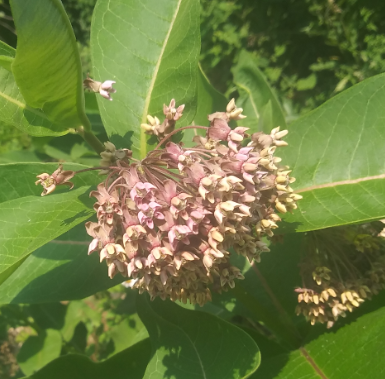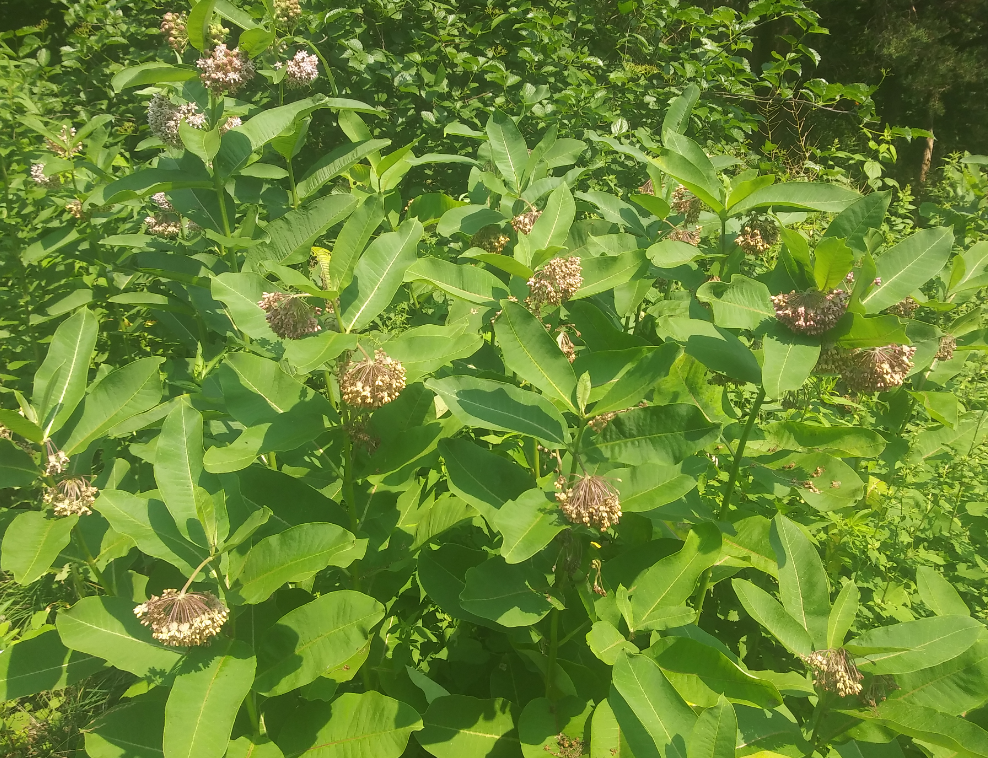In my case, I have been doing exactly that for a number of years. Many years ago I found if difficult to even find these plants. Common milkweed (Asclepias syriaca) was still being sprayed and removed, and you could not yet find swamp milkweed (Asclepias incarnata) in the garden centers. Dial forward a few years and now they are all the rage. Well, they should be. You may not find common milkweed in the garden centers quite yet, but you are more likely to find a few plants with seed pods nowadays, and if you go online you should have no problem. I am not going to go into the plant descriptions as I did that a few years ago already, but I want to make a passionate plea to have you add milkweed plants to your garden mix. They are not only crucial to the survival of the monarch butterfly, but there are hundreds of other insects, hummingbirds, and small herbivores that need this group of plants to stick around. And we should be generous with the space we allow the milkweeds. Volume matters!. A dense thicket of milkweeds is better than a single plant here or there. Monarch caterpillars are easily spotted, and even though they may taste foul, enough of them still fall prey to hungry birds and other animals. Providing shelter is a good idea. OK, common milkweed can be a bit of a bully as it sprouts new plants from its roots in an ever growing circle, and it may end up in your lawn or some other designated area. Maybe you don’t need to mow as much, and can leave them be for a few months? Common milkweed are almost impossible to transplant – the root easily goes down 8-12 inches or more and if you are lucky to get enough root material, it will likely not be until next year you will see some fruit of your labor as 1 out of 20 will come back only. (I tried this too many times). Aside from common milkweed you should have good luck with Asclepias incarnata (swamp milkweed). This one is a lot more sedentary, but I find it does well only for a year or two, and then the original plant gives up. The key is getting new seedlings started on a continuous basis. I have some butterfly weed (Asclepias tuberosa) as well but propagation from seed has been spotty at best, and the mature plants like it sunny and dry. They don’t like to be shaded out, and as my yard is full of plants trying to outdo each other they are finding it difficult to maintain a foothold.

I have close to 200 milkweed plants in the sunniest part of the garden – 30% would be common milkweed, 65% marsh milkweed and the rest is butterfly weed and some whorled milkweed plants I started from a seed catalog. The yard is now also a monarch waystation site, although that by itself is not that hard to attain. (https://monarchwatch.org/)

Leave a Reply